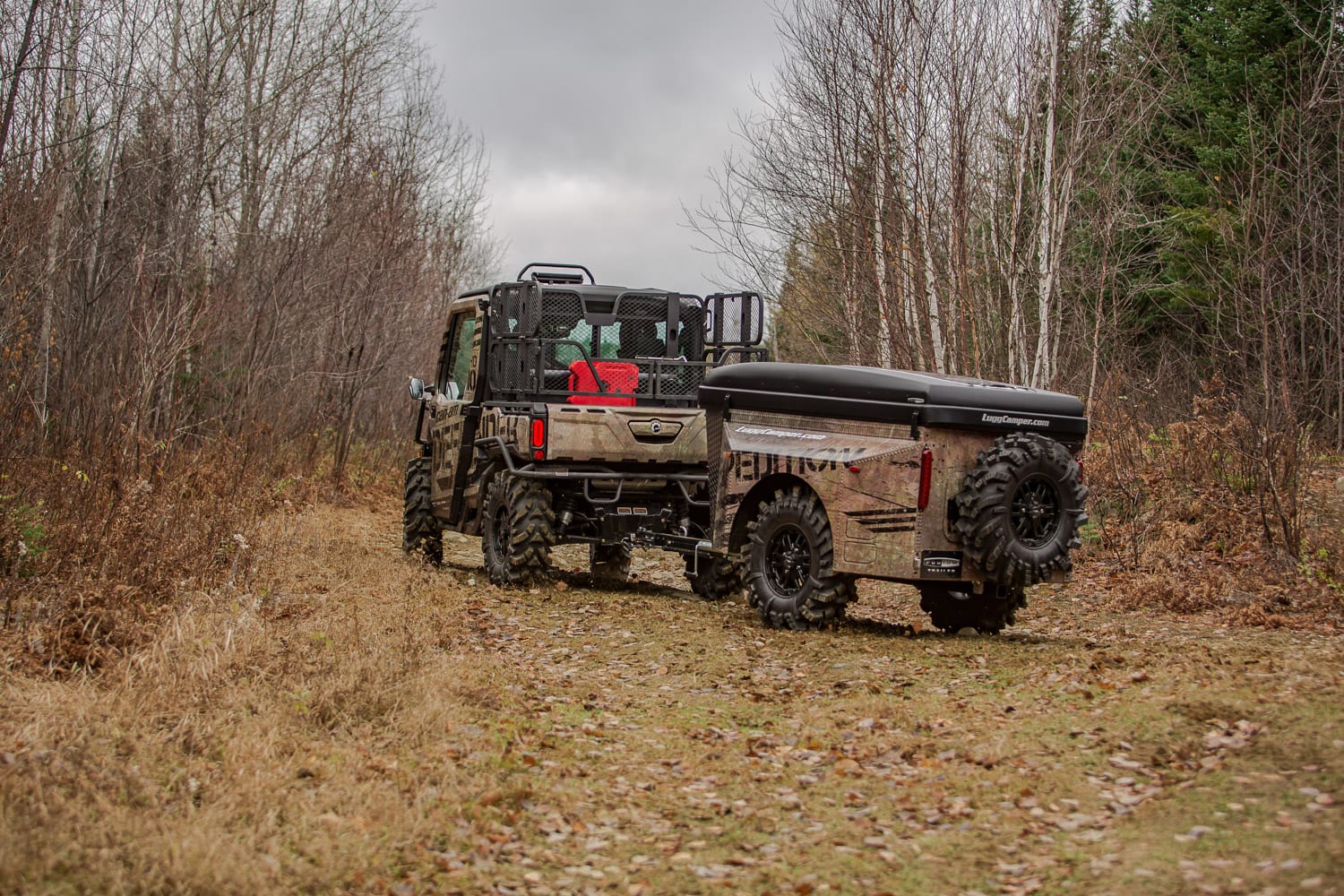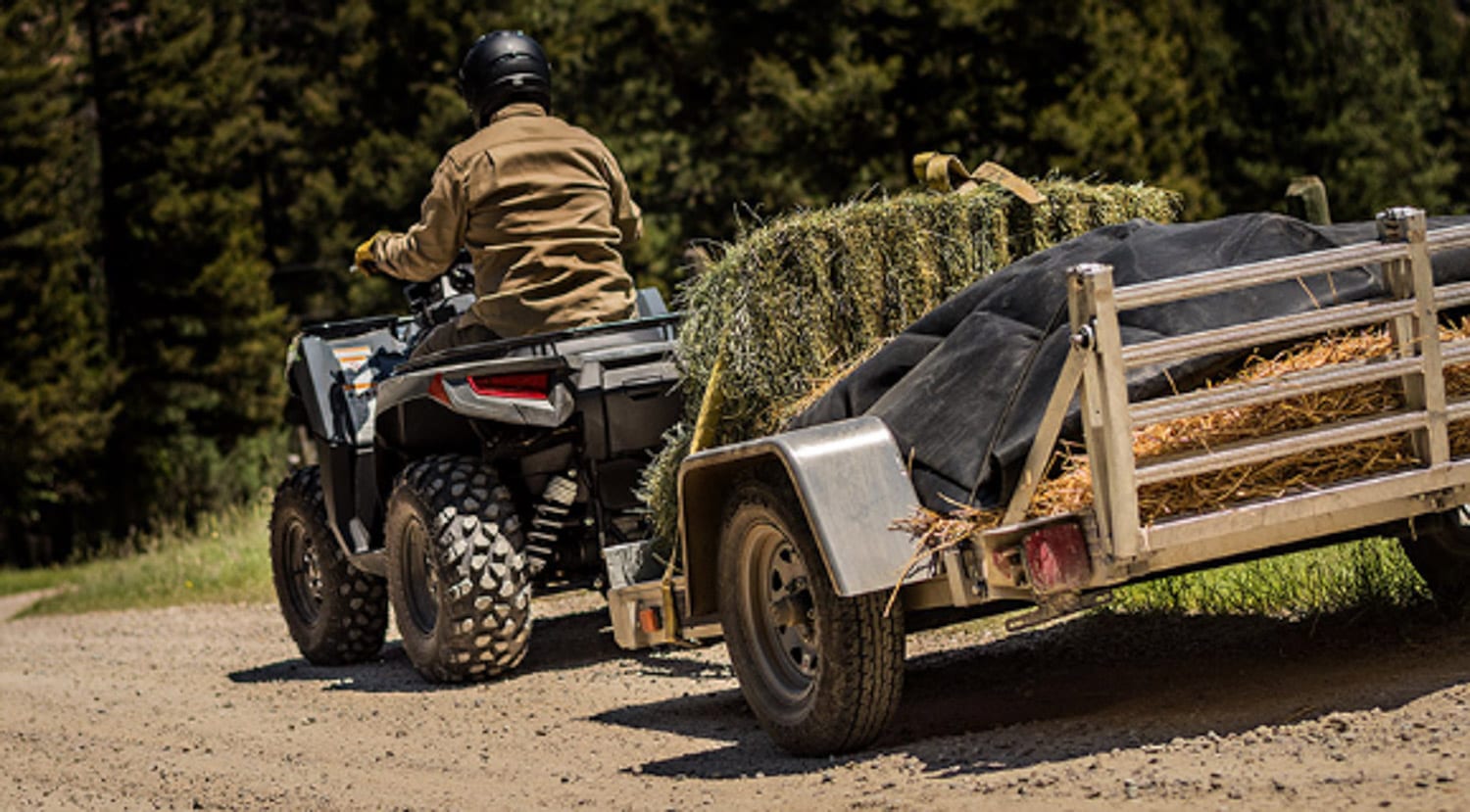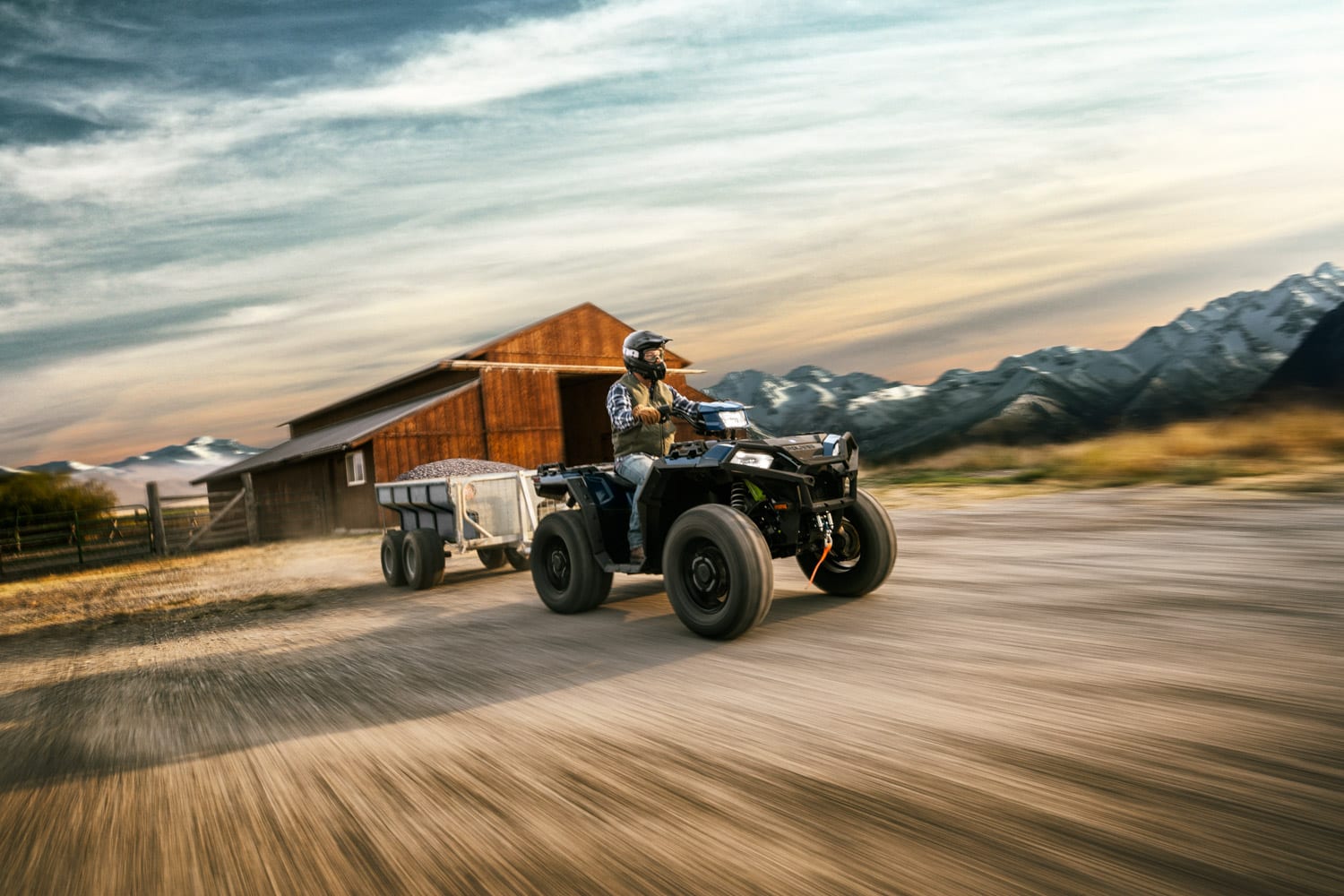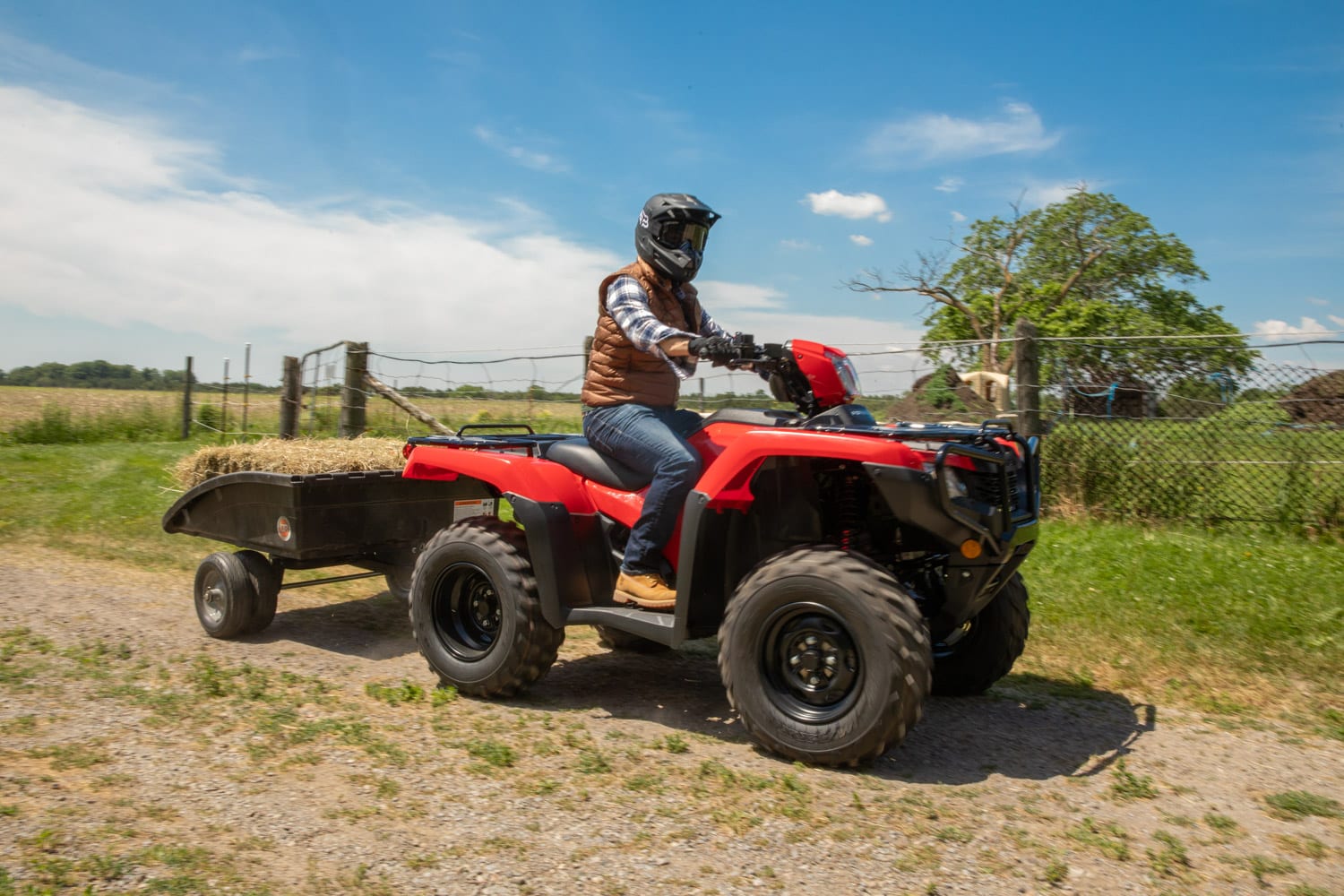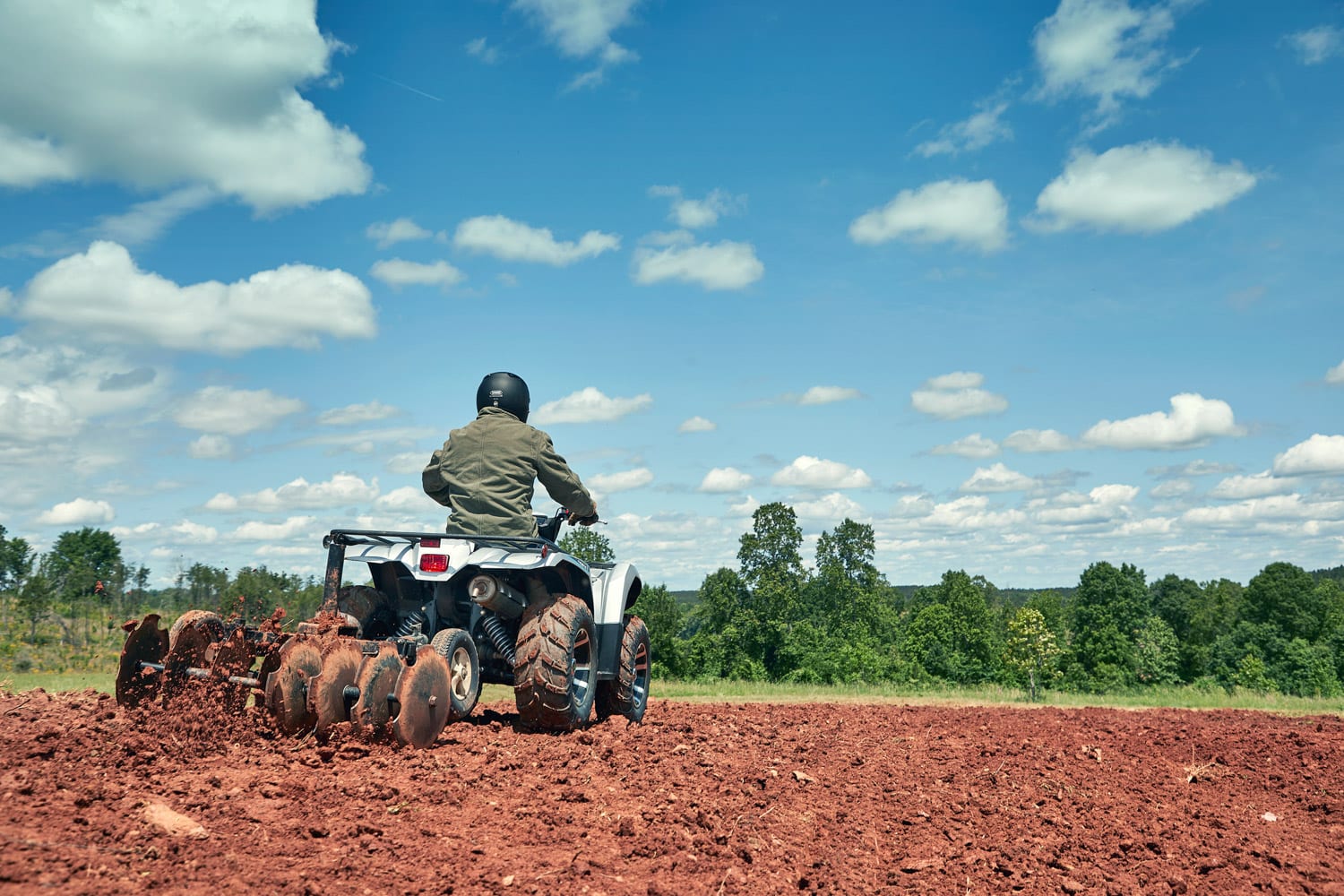Your ATV was designed with the utility side in mind. Unfortunately, you may sometimes have more equipment to carry than your luggage racks can handle. What is the next step? You may need a trailer. Here are a few things to consider when choosing a trailer wisely: the type of equipment that will be towed; the type of terrain you will be traveling on; the towing capacity of your ATV and finally, the types of hitches that will be required.
The type of equipment you will tow will have a big influence on the type of trailer you will need. ATV trailers are built in a variety of shapes and sizes to suit these needs. The multi-purpose models are generally acceptable for most ATV owners. However, some owners may need something a little more adapted for the job. These more robust trailers will be used to carry material such as gravel, wood or leaves all around their property. Some of these trailers also have a tilting platform which will be an attractive option for these uses. Also, depending on the weight of the material to be transported, some manufacturers offer the option of a second axle for this purpose. Large, sturdy tires are available on most models to provide safety and stability while carrying your load. But most are low-pressure tires, which means they are only really stable at low speeds and in off-road driving conditions. So, in general, these trailers are not legal for use on the road and will, therefore, be unsafe under these conditions.

Not everyone uses their trailer for work. Some ATV owners will use a trailer for more recreational purposes, such as carrying camping gear, tools or hunting gear. Most of these trailer models have elevated side panels and hooks to cover and secure loads.
These trailers are made of steel, plastic, or a combination of both – some even float on water. Options such as multiple tie-downs, a removable tailgate, and easy-to-use shelf or rack systems allow the buyer to personalize their purchase.
In addition to getting the right trailer, there is another important consideration that you probably won’t think about in the dealer’s showroom. Just because your ATV can get to a place doesn’t mean the trailer can get there too. So you have to consider the type of trails and the conditions of the terrain where you will have to use it. Some trailers are wider than others, some are higher and some are longer. If you use it primarily on a small property like your cottage, or even on a large grassy site at your main property, just about any model or size of a trailer can be right for you. However, if you have to move your cargo through dense forest or tight trails, you may need to consider a narrower trailer model. Remember to choose what best suits your needs. After determining what you are looking for, there are a few things to consider before purchasing your trailer.
Most ATVs can be used for towing, however, their ability to do so varies considerably from one model and manufacturer to another. Probably the most important factor to check is the maximum weight your ATV can tow. Never try to tow a load greater than the maximum rated towing capacity of your ATV. This may seem obvious, but most owners will ignore this notice; it’s human nature. Always remember the following reasoning: towing is more a question of being able to stop than being able to pull. Most ATV engines have a lot of power to tow, but what about the brakes? ATV trailers do not have brakes so all the hard work to stop the trailer (and the ATV) is done only by the ATV. Second, towing on slopes – whether ascending or descending – can seriously affect the balance of the trailer and the ATV. Will I be able to stop at the top of the slope? Basic rule: if the load is heavier than the weight of the ATV, stay at the bottom of the slope!
In fact, slopes are probably the most potentially dangerous situations when using a trailer. Here are the main things not to do: do not go up or down a slope diagonally with a trailer – tow directly in a straight line up or down. Do not tow on a slope on uneven ground, this will affect the balance of loads (you can move to counterbalance, but the load cannot). Do not tow through ditches and sharp trenches: the hitch, which is intentionally placed very low on the chassis of the ATV, can dive into the ground and disturb the balance of loads. Do not rely only on the ATV brakes to slow a trailer downhill: always stop at the top, select the lowest gear to use the engine brake as well as the brakes.
This brings us to the load itself. Always try to center the load on the trailer axle to make sure it is balanced. More weight on the axle of the trailer, which is also the lowest point in its construction, also means less load on your ATV.
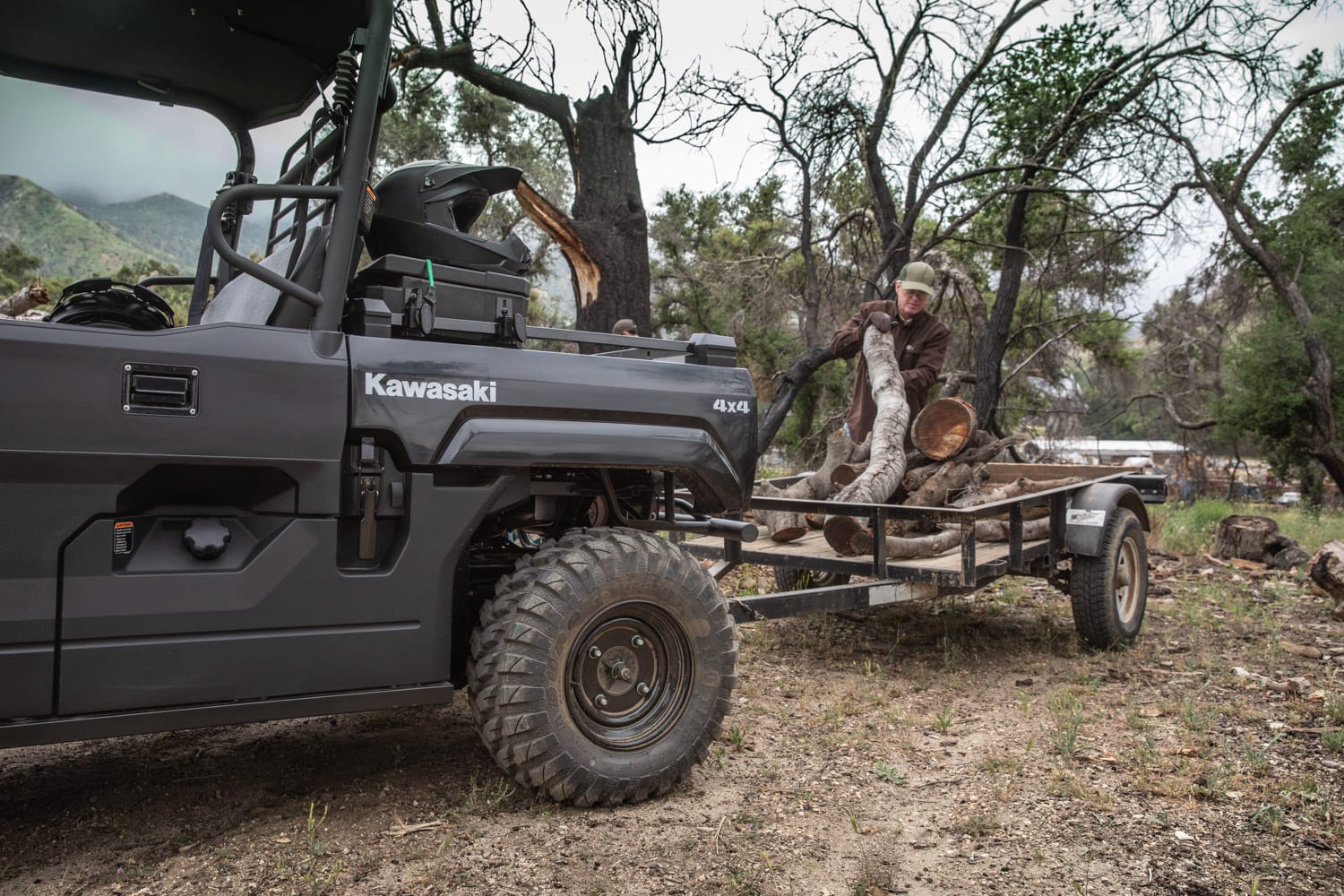
As for hitches, most ATVs use a hitch receiver mounted on the chassis frame that can accommodate a steel drawbar with a bolted hitch ball. These are generally standard automotive grade hitch balls. These are very convenient because the couplings of your truck, for example, will also be able to adapt to your ATV. Some manufacturers, however, offer couplers of special sizes that only they can provide. So while the hitch balls are standard sizes, you will need to purchase the drawbar compatible with their receivers.
ATV trailers are fitted with the same safety equipment found on road trailers. This includes safety chains and a lockable hitch ball coupler. Always use them: the danger of losing a trailer while driving is increased by the difficulty of the terrain and these safety features are designed to prevent these dangers.
In closing, I know I shouldn’t have to say that, but I will say it anyway – never let anyone get into a trailer towed by an ATV. Children, among others, think it can be fun, but the risk of injury or even death is real. Please, just don’t do it.


